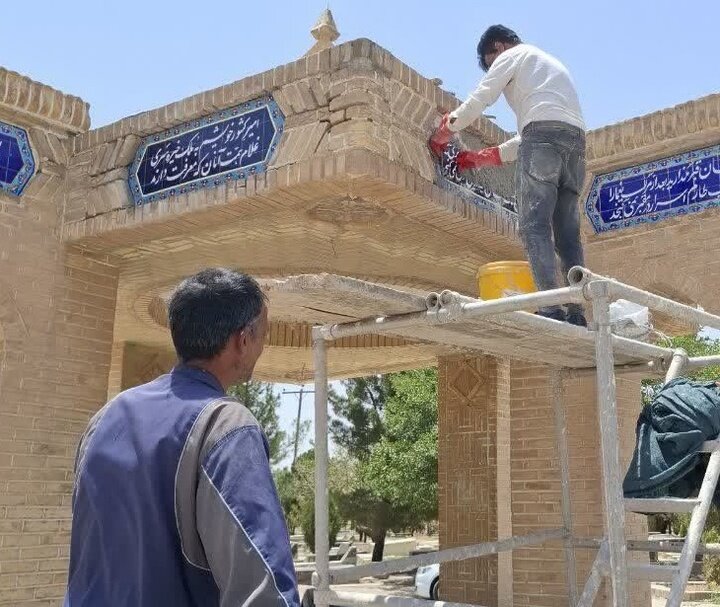Poet Heydar Yaghma’s tomb restored

TEHRAN - The tomb of contemporary Persian poet Heydar Yaghma (1924–1984) has recently undergone a restoration project, according to the head of Neyshabur’s office for cultural heritage.
Hassan Giyahi, who presides over the office, on Tuesday said the restoration was carried out due to the cultural and architectural significance of the modest mausoleum and in response to damage caused by both natural and human factors.
“As part of the restoration, a waterproofing layer was applied to the roof to prevent moisture from penetrating the structure and behind the inscriptions,” Giyahi explained. “Seven damaged ceramic tile inscriptions, featuring the poet’s verses, were remade using traditional tile-making techniques and reinstalled. In addition, deteriorated bricks and damaged sections of the tomb’s body were repointed and reinforced.”
Giyahi emphasized the architectural and cultural value of Yaghma’s tomb and noted that the perimeter of the surrounding area has now been defined. “If further cooperation and resources are secured, landscaping and site development can be planned in the future,” he added.
The mausoleum is located near the famous tomb of Omar Khayyam in Neyshabur. Khayyam, a celebrated 12th-century Persian polymath and poet, remains a major cultural landmark in the region.
Heydar Yaghma, a descendant of the early Qajar-era poet Yaghma Jandaqi, was widely known for his unpolished yet heartfelt poetry and was nicknamed "Yaghma-ye Kheshtmal," referencing his humble background as a bricklayer before rising to literary recognition.
In ancient times, Neyshabur was one of the most significant cities in Iran. It was home to many great men of science, art, and culture and today it hosts tourists who go to visit the relics of that period.
Situated some 70 km west of Mashhad, Neyshabur was founded around the third century CE. Narratives say the town derived its name from its alleged founder, the Sasanian king Shapur I.
It grew to prominence in the eighth century and was ruined by invasions and earthquakes in the thirteenth century. After that time, a much smaller settlement was established just north of the ancient town, and the once-bustling metropolis lay underground—until a team of excavators from the Metropolitan Museum arrived in the mid-twentieth century.
Neyshabur underwent rounds of excavation as of 1935 by experts from the Department of Near Eastern Art at The Metropolitan Museum of Art. According to the Metropolitan Museum of Art, its affiliated archaeologists worked at Neyshabur between 1935 and 1940, returning for a final season in the winter of 1947–48.
The excavators had been drawn to the city due to its fame in the medieval period as a regional capital, and it was home to many religious scholars. It was also known as an economic center.
AM
